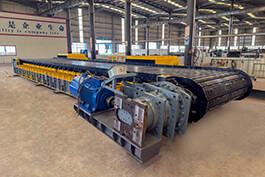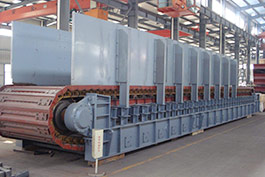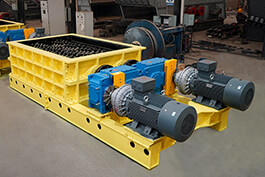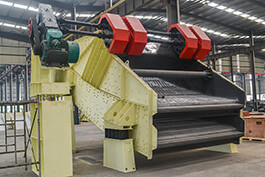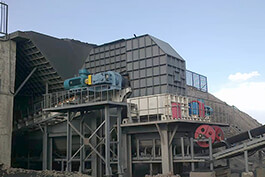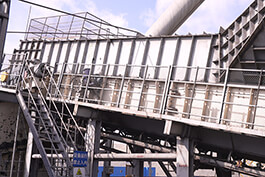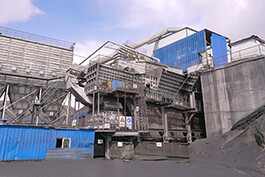In the cement production process, the clinker of rotary kiln is generally sent to the clinker warehouse for storage after being cooled by the cooler to eliminate the uneven production and the influence of changes in the temperature and composition of the clinker. In view of the strong grinding properties of the clinker and the fact that the clinker temperature may still be higher after cooling, Clinker feeding (including the fabric between the tops of multiple clinker warehouses) is done using
apron feeder. As an important auxiliary equipment of cement plant, apron feeder operation has a direct impact on the operation rate of the whole plant, especially in the process design of modern cement plant does not consider the clinker apron feeder standby bypass. The correct design of apron feeder is the precondition of its good operation. This article briefly introduces the type, characteristics and design of apron feeder for reference.
2.1. Throughput is an important parameter to determine apron feeder specifications. Generally determined according to the process requirements, the actual production of apron feeder feeding forms are largely non-control and control two.
(1) Uncontrolled feeding mode. The feeding volume of this feeding method is not balanced, but fluctuates and cannot be controlled by the choice of conveying equipment capacity must meet the needs of the maximum conveying volume. For the clinker apron feeder between the rotary kiln cooling machine and the clinker warehouse, the theoretical conveyor capacity of the apron feeder should be 1.5-2 times of the rated output of the kiln due to the possibility of dropping the kiln skin and punching the material in the production process of the rotary kiln (the smaller value is taken when the kiln size is large, and the larger value is taken). When one apron feeder transmits clinker of several kilns at the same time, the sum of 1.5~2 times of the rated output of the maximum kiln and the rated output of the other kilns is more appropriate as the theoretical throughput of apron feeder. This calculation method can avoid the possibility of overload on apron feeder during peak kiln load, but in the normal production process, due to the relatively low probability of kiln skin loss or punching,
apron feeder will only work at 50% to 67% of its theoretical transmission capacity during most working hours. Resulting in an unnecessary increase in the wear of moving parts. In this regard, the use of speed control motor is a better solution. That is, at the peak load of the kiln, high-speed transportation is used: at the normal load of the kiln, low-speed transportation is used. This allows apron feeder to work at low speed and full load during most of the operation time, reducing the wear and impact load of moving parts, and extending the service life of chains, rollers, etc. The commonly used speed regulation methods are stepless speed regulation using variable frequency motor and stepless speed regulation using variable pole multi-speed motor. It is worth pointing out that the use of speed regulating motor, the system needs to increase the size of the incoming load detection device.
(2) Control the feeding method.
The feeding amount of this feeding mode can be adjusted and controlled, and the theoretical throughput of apron feeder can be calculated according to the required value, such as the clinker from the bottom discharge device of the clinker library.
Delivery speed is another important parameter for selecting apron feeder specifications. The same throughput can have different combinations of speeds and specifications. The high delivery speed means that a smaller size apron feeder is available, which means that the weight of the running parts is reduced, and it also means that a smaller speed ratio is available. In addition, increasing the conveying speed can reduce the tension in the chain, and a chain with a smaller breaking load can be selected. However, the high transmission speed will bring moving parts (chain, sprocket, roller, etc.) marriage damage and dynamic load increase and other negative effects, which is the root cause of restricting the transmission speed. Therefore, the conveying speed must be considered comprehensively. For clinker chain
apron feeder, the delivery speed should not be adjusted to 3m/s.


.jpg)
